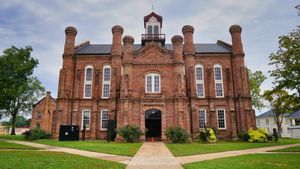Hundreds of cyclists gathered outside Queen’s Park on Saturday afternoon, rallying against the Ontario government’s proposed bike lane legislation which has sparked considerable controversy. Dressed in helmets and brightly colored cycling gear, they were there to push back against the plans laid out by Premier Doug Ford’s administration, plans which many believe will compromise traffic safety for cyclists across Toronto.
The Progressive Conservative government is fast-tracking legislation requiring municipalities to request provincial permission before removing bike lanes if it means getting rid of any vehicle traffic lanes. This setup could potentially wipe out three significant bike lanes on key streets—Bloor Street, Yonge Street, and University Avenue. Each of these lanes is heavily utilized, and for many cyclists, they represent safe passage through the busy city.
One of the rally organizers, Eva Stanger Ross, co-founder of the advocacy group Fight for Bikes, expressed her deep concerns over the planned removals. "I use the Bloor Street bike lanes almost every day. They are always packed, so it’s targeting the most important bike lanes in the city. It makes absolutely no sense," she stated passionately. This sentiment echoed throughout the crowd gathered at Queen’s Park, many holding signs with stern messages like, "How many have to die?" highlighting their fears about increased risks without dedicated bike lanes.
Stanger Ross and other cyclists assert the necessity of these protected lanes for their safety. "Without those protected bike lanes, drivers often don't think about the cyclists around them. They don’t think of them as a hazard they have to watch out for, making it much more likely for cyclists to get hit," she offered, highlighting the potential dangers of the proposed measures. The atmosphere was thick with concern, as the passionate crowd united against the anticipated hazards lying on their roadways.
Recent amendments to the bike lane bill included provisions to shield the provincial government from potential lawsuits stemming from injuries or fatalities among cyclists after the bike lanes are removed. "This amendment suggests the government knows removing the lanes will make roads less safe for cyclists," Stanger Ross argued. "To me, it shows the government knows they’re going to be putting civilians in harm’s way and they know people will be killed or injured. Instead of addressing it, they’re just covering themselves up," she stated, her voice echoing the thoughts of many around her.
The rally not only reflected significant concerns but also personal stories. Leah Jaunzem, another rally attendee and avid cyclist, hasn’t ventured out on her bike for nearly a year due to safety worries. "It’s so straightforward and simple: we need to protect cyclists. We have such a problem in the city with pedestrians and cyclists getting injured," she commented. Her sentiments struck emotional chords within the group, illuminating the dire need for attention to cyclist safety.
Protesters challenged the government’s stance advocating for bike lanes to be placed on secondary roads, arguing those routes do not suffice for necessary travel. Zev Godfrey, another co-founder of Fight for Bikes, pointed out the inadequacies of alternate routes. "Toronto is not a perfect grid, and most of the time, there aren’t streets running alongside the primary streets for very long," he insisted, emphasizing the need for safe routes straight to their destinations, which are often situated on primary streets.
Despite the outcry from advocates, Dakota Brasier, spokesperson for Ontario’s transportation minister, reiterated government talking points. He maintained bike lanes contribute to the gridlock seen throughout Toronto, stating, "We are doing everything we can to fight congestion and keep major arterial roads moving. We support a common-sense approach to bike lanes and encourage the city to listen to the thousands of drivers to help clear our major roads and get people out of traffic."
On the political front, Toronto’s City Council has officially opposed the Ford administration’s plans. They passed motions recently, urging the province to reconsider. According to city reports, it could cost upwards of $48 million to follow through with the proposed removals, summoning additional scrutiny over the decision. Mayor Olivia Chow, having lived through the dangers associated with cycling unprotected, said, "I’ve been doored on Bloor Street without a bike lane. Now I ride on Bloor Street with a bike lane; I feel very secure because of the bike lane there." Her experiences mirror the broader concerns shared within the community, as safety and accessibility become increasingly pivotal points of discussion.
Mayor Chow also conveyed her hope for collaboration between the city and province, aiming to find common ground to address the pressing issue of traffic congestion without compromising the safety of cyclists and pedestrians. Amid the growing unrest, both cyclists and city officials remain firm on prioritizing community safety and welfare.
With higher numbers of cyclists reported where bike lanes exist, the current legislation proposal has raised significant questions about its necessity. Advocates for cycling safety remain undeterred, galvanizing the community to voice their concerns as the fight for safer roadways continues.



